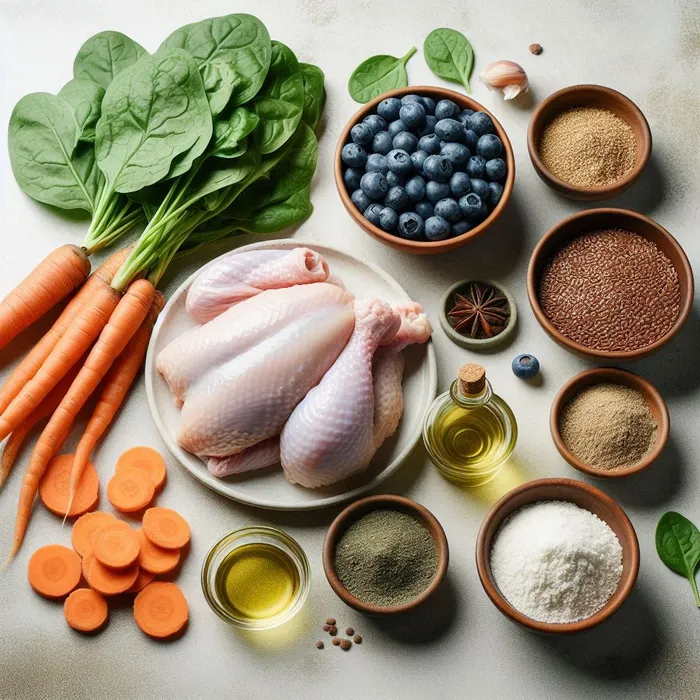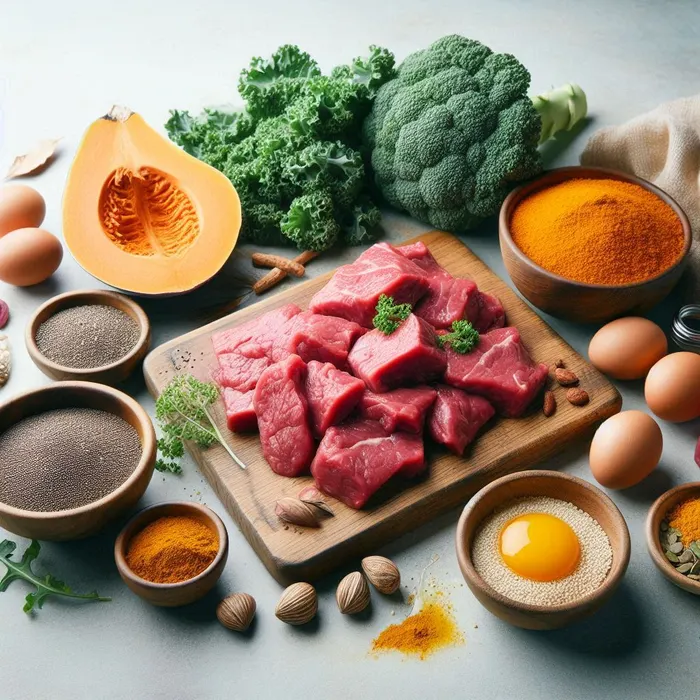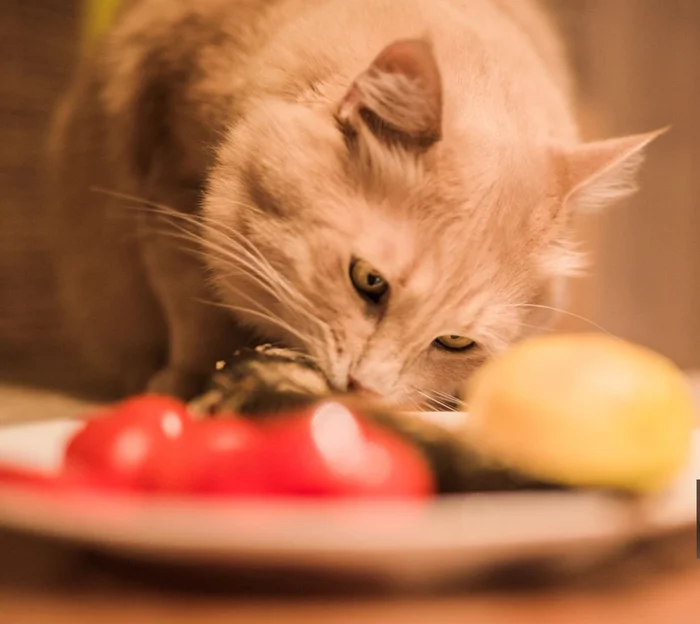Every cat owner knows the importance of providing a nutritious diet for their beloved pets. But have you ever considered the environmental impact of the food you feed your cat? Traditional commercial cat food often involves industrial farming practices, excessive packaging, and long-distance transportation, contributing to your pet’s carbon pawprint. If you’re looking for a more sustainable option, raw cat food recipes could be the answer. This guide explores the benefits of raw feeding for cats, provides eco-friendly recipes, and offers tips for making your pet’s diet as green as possible.
The Environmental Impact of Conventional Cat Food
Commercial cat food is often produced with ingredients that have significant environmental costs. Here’s how:
- Intensive Farming Practices: Many commercial cat foods use ingredients sourced from intensive farming, which contributes to deforestation, loss of biodiversity, and soil degradation. The production of these ingredients can also involve high water usage and greenhouse gas emissions.
- Excessive Packaging: Most commercial pet foods come in plastic packaging, which contributes to the growing issue of plastic pollution. Single-use plastics often end up in landfills or oceans, where they can take hundreds of years to decompose.
- Long-Distance Transportation: Ingredients and finished products often travel long distances before they reach store shelves. This transportation adds to the carbon footprint of the pet food industry.
By switching to raw cat food recipes made from sustainable ingredients, you can significantly reduce these environmental impacts.
The Benefits of Raw Cat Food
Switching to a raw diet offers several advantages for both your cat’s health and the environment:
- Improved Digestion: Raw food is easier for cats to digest compared to processed kibble. It leads to smaller, firmer stools and can help with digestive issues.
- Healthier Skin and Coat: The natural oils and nutrients in raw food promote a shiny, healthy coat and can reduce skin irritations.
- Increased Energy Levels: Raw diets provide high-quality proteins and fats that support energy levels and overall vitality.
- Enhanced Immune System: Fresh, raw ingredients are rich in vitamins, minerals, and antioxidants, which strengthen your cat’s immune system.
- Better Dental Health: Chewing on raw bones and meat helps clean teeth and strengthen gums, reducing the risk of dental problems.
Eco-Friendly Practices for Raw Feeding
To ensure that your raw cat food practices are as eco-friendly as possible, consider the following tips:
- Source Locally and Sustainably: Choose organic, locally-sourced meats and vegetables to reduce the environmental impact of transportation and farming. Look for suppliers who use sustainable practices.
- Reduce Packaging Waste: Buy ingredients in bulk to cut down on packaging and use reusable containers for storage. Compost vegetable scraps to further reduce waste.
- Utilize the Whole Animal: Opt for less popular cuts or organ meats that are often discarded in commercial food production. This approach helps reduce waste and ensures that more of the animal is used.
- Energy-Efficient Preparation: Use manual tools instead of electric ones when preparing raw food, and prepare meals in batches to save energy.
- Choose Sustainable Supplements: Select supplements that are sustainably sourced and come in recyclable or compostable packaging.
Recipe 1: Organic Chicken & Veggie Feast: A Raw Cat Food Recipe for a Sustainable Diet

Nutritional Benefits: This recipe combines lean organic chicken with a variety of vegetables for a balanced, nutrient-rich meal that supports your cat’s overall health.
Ingredients:
- 1 pound organic chicken (including bones, such as wings or necks)
- 1/2 cup chopped organic carrots
- 1/2 cup organic spinach
- 1/4 cup organic blueberries
- 1 tablespoon ground flaxseed
- 1 teaspoon fish oil (sustainably sourced)
- 1/2 teaspoon kelp powder
Instructions:
- Prepare the Chicken: Choose a mix of meat, bones, and organs. Chop the chicken into small pieces. Ensure the bones are safe for your cat to consume.
- Add Vegetables: Wash and chop the carrots and spinach. These vegetables provide fiber and essential nutrients. Carrots are rich in beta-carotene, while spinach adds vitamins A, C, and K.
- Incorporate Blueberries: Add the organic blueberries. They are high in antioxidants, which support your cat’s immune system.
- Mix in Supplements: Sprinkle the ground flaxseed, fish oil, and kelp powder. Flaxseed provides omega-3 fatty acids, fish oil promotes a healthy coat, and kelp powder adds essential minerals.
- Serve Fresh: Mix all ingredients thoroughly and serve immediately. Store any leftovers in the refrigerator for up to three days, or freeze in portions for future use.
Eco-Friendly Tips:
- Sourcing: Buy organic, pasture-raised chicken from local farms or butchers.
- Composting: Use vegetable scraps and chicken bones to make a nutritious broth.
- Packaging: Choose suppliers with compostable or recyclable packaging.
Serving Suggestion: This Organic Chicken & Veggie Feast is a complete meal, ideal for maintaining your cat’s health and well-being.
Recipe 2: Grass-Fed Beef & Superfood Blend: Eco-Friendly Raw Cat Food Recipe

Nutritional Benefits: Grass-fed beef combined with nutrient-dense superfoods like kale and pumpkin offers a meal rich in essential vitamins and minerals that support your cat’s vitality.
Ingredients:
- 1 pound grass-fed beef (including organ meats like liver or kidney)
- 1/2 cup chopped organic kale
- 1/2 cup organic pumpkin puree (unsweetened)
- 1/4 cup cooked organic quinoa
- 1 tablespoon chia seeds
- 1 teaspoon turmeric
- 1 organic free-range egg
Instructions:
- Prepare the Beef: Chop the grass-fed beef and include organ meats for added nutrients. Organ meats provide essential vitamins and minerals.
- Add Kale: Wash and chop the kale. It is rich in vitamins K and C, calcium, and fiber, which supports bone health and digestion.
- Mix in Pumpkin: Add the organic pumpkin puree for its digestive benefits and fiber content.
- Incorporate Quinoa: Stir in the cooked quinoa, a complete protein source that is also gluten-free.
- Add Supplements: Mix in chia seeds, turmeric, and an organic free-range egg. Chia seeds provide omega-3s, turmeric has anti-inflammatory properties, and eggs offer protein and essential nutrients.
- Serve Fresh: Combine all ingredients thoroughly and serve immediately. Store leftovers in the refrigerator for up to three days, or freeze in portions.
Eco-Friendly Tips:
- Grass-Fed Beef: Choose locally-sourced, grass-fed beef to minimize environmental impact.
- Sustainable Supplements: Opt for chia seeds and turmeric that are sustainably sourced and come in eco-friendly packaging.
- Reusable Containers: Store food in BPA-free, reusable containers.
Serving Suggestion: This Grass-Fed Beef & Superfood Blend is a well-rounded meal that supports overall health and vitality.
Eco-Friendly Raw Feeding: Going Beyond the Recipes
Incorporating eco-friendly practices into your raw cat food routine benefits not just your cat but the environment as well. Here are additional tips for a sustainable approach:
- Sustainable Seafood: If including fish in your cat’s diet, choose sustainably sourced options to prevent overfishing.
- Utilize Every Part: Use every part of the animal, including organs and bones, to reduce waste.
- Smart Shopping: Buy ingredients in bulk and support suppliers who prioritize sustainability.
- Composting and Recycling: Compost vegetable scraps and recycle packaging materials to minimize waste.
- Grow Your Own Herbs: Consider growing herbs like parsley and basil at home to reduce packaging and transportation needs.
Conclusion: Healthy Cats and a Healthier Planet
Transitioning to raw cat food recipes is a positive step for both your cat’s health and the environment. By choosing fresh, sustainable ingredients and following eco-friendly practices, you can ensure that your feline friend enjoys a nutritious, wholesome diet while also reducing your environmental footprint.
Try these raw cat food recipes and observe the benefits in your cat’s health and vitality. Feel free to share your experiences and additional tips for sustainable pet care in the comments. Together, we can make a meaningful impact on our pets’ lives and the planet we share with them.



